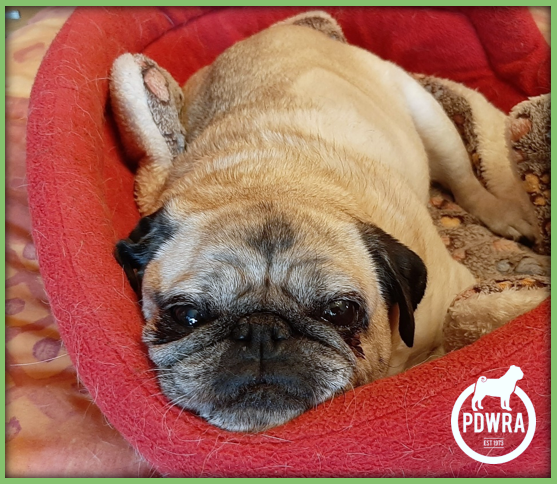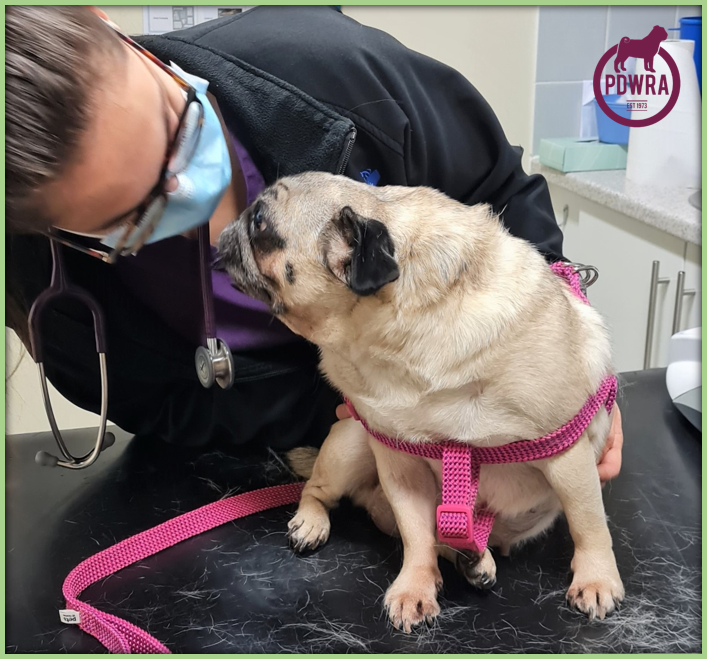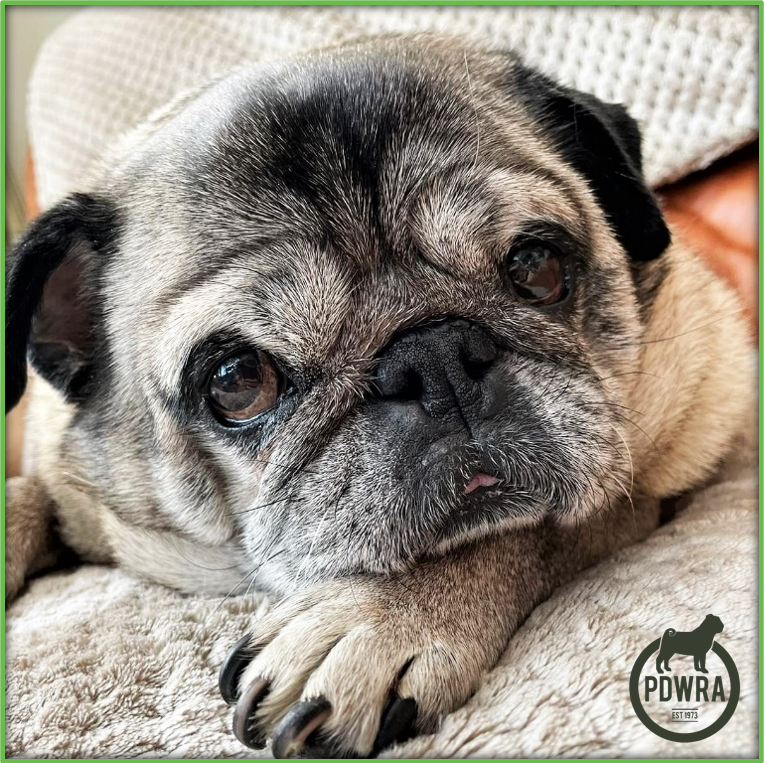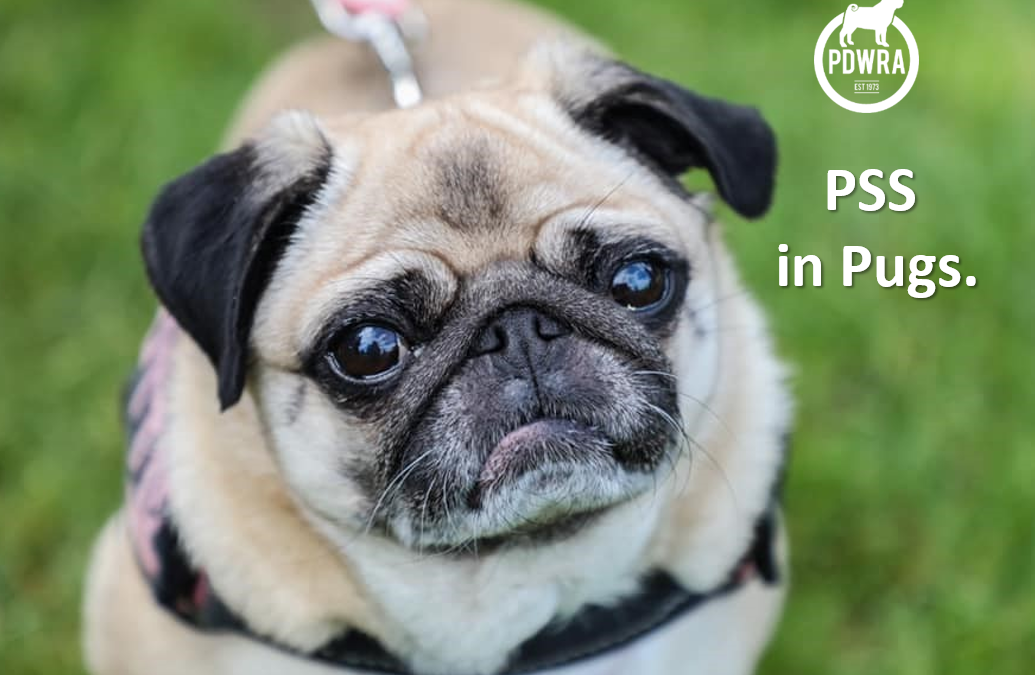This is not a condition that is over-represented in pugs, unlike many of the conditions that I have written articles on, though having seen a couple of cases of PSS in PDWRA pugs this year, I thought it was a good time to write an article on it.
A Portosystemic shunt (PSS) is where an abnormal vessel goes directly from the intestine into the main circulation, bypassing the liver.
The liver processes nutrients as well as removes toxins, and with a shunt, most of the blood bypasses the liver and flows back to the heart, where it is pumped round the body.
Generally speaking, the type of shunt seen in pugs tend to be congenital (born with the abnormality) and extra-hepatic, meaning accessible outside the liver.
Clinical signs of a PSS are a consequence of the blood bypassing the liver, with toxic substances pumped round the body, including to the brain.
Dogs with a PSS can be small for their age, and often are the ‘runt’ of the litter because of reduced nutrition. Symptoms can occur gradually, with excess drinking (and urinating), and altered (neurological) behaviour such as lethargy and apparent blindness, culminating in seizures.

Diagnosis
Blood samples are usually taken if an animal is showing suspicious clinical signs. Routine blood biochemistry results are often suggestive of a PSS allowing further more specific blood samples determining bile acid levels to be taken before and after feeding. Ultrasound examination of the abdomen often allows the shunt to be identified, or where a shunt is not visible ultrasound can show changes consistent with a shunt.
Treatment
If a shunt is left untreated, the dog will eventually die from the condition.
PSS can be treated either medically or surgically, however the older the animal, the poorer the prognosis following surgery, although surgical correction is the treatment of choice.
Medical management is aimed a reducing the symptoms caused by the shunt rather than treating the shunt itself. Feeding these animals a diet low in protein is the mainstay of medical management. This decreases the amount of toxic substances being absorbed from the gut and entering the main circulation via the shunt. Diet selection is important to ensure animals still receive adequate ‘essential’ proteins for growth and general health. Antibiotics and lactulose are also used to lessen toxin production and absorption. Most animals are stabilised on medical management for several weeks prior to surgery. Those animals which are not suitable for surgery, for example older animals, can be maintained on this treatment long-term however they are likely to have a limited life span.

The surgery for a shunt is very challenging and will require a specialist soft tissue surgeon to undertake. The aim is to find the shunt and close this down so allowing all the blood draining from the gut to be routed correctly through the liver substance for processing. However, closing the shunt completely during surgery is only possible in approximately 15% of animals. In the majority of animals, the normal vessels to the liver are under-developed and are unable to cope with the additional blood flow.
Closing the shunt suddenly in these animals would cause major problems with shock and potentially death, therefore the shunt is usually only partially closed and then allow the animal to recover from the procedure. Over the first 3 months post-operatively there is some ongoing closure of the shunt in many animals the shunt will eventually close. This is not always the case and additional surgeries may be needed. Dogs are monitored following the surgery with repeated bile acid tests.
Unfortunately, some animals are not able to fully develop a normal blood supply into their liver despite surgery to close the shunt and some blood will therefore always pass through the shunt. These animals can do well despite this, although some need extra medical management.

In summary, a portosystemic shunt is a serious condition that can lead to death if untreated.
The ideal way to treat is with early surgical intervention, however it is not without risk, and requires a specialist surgeon. Lifelong management is often required.
It is therefore also a very expensive condition to treat and manage, the cost of which would likely be prohibitive without insurance.
Helen McKee (MRCVS)
PDWRA Voluntary Vet Advisor.


